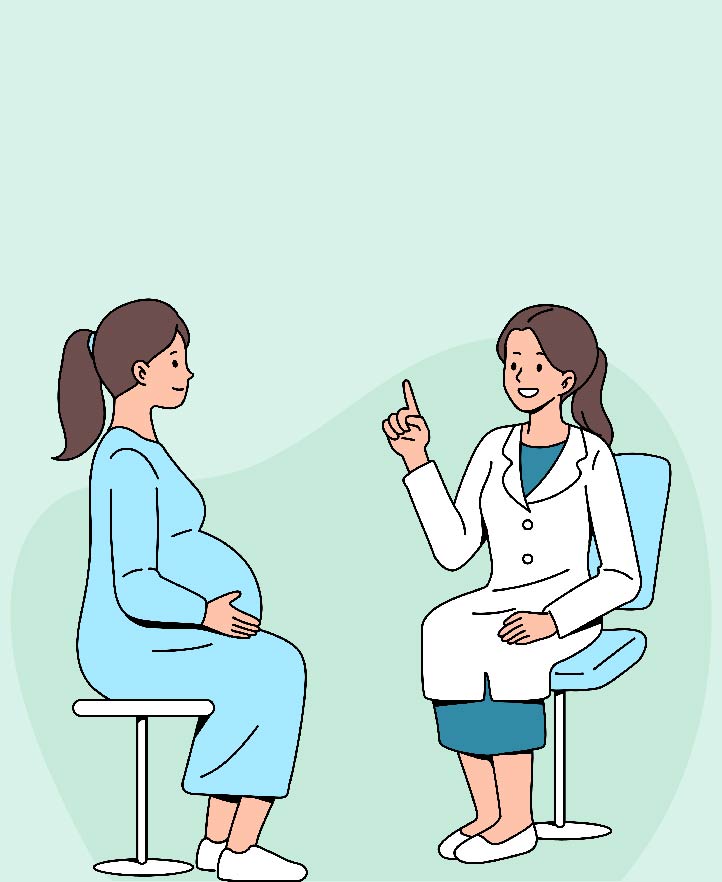

Pre-Eclampsia in Pregnancy: Causes, Signs & Risks
Pre-eclampsia is a medical complication during pregnancy. Typically, it affects expecting mothers during the 5th month (20th week) of their pregnancy. While there are no obvious symptoms of pre-eclampsia, women should check their blood pressure regularly to minimise the risk of this condition. Its important for an expecting mother to know about pre-eclampsia symptoms early on and get the condition treated on time because if not, pre-eclampsia can be life-threatening for both the mother and the baby. Read on to know more.
What is Pre-eclampsia?
Pre-eclampsia is a pregnancy complication that you may experience, usually after the 5th month (20th week) of your pregnancy. It is quite rare for this condition to affect the early stages of your pregnancy. Pre-eclampsia is a medical condition wherein you experience high blood pressure and a large quantity of protein in your urine (proteinuria). It can cause severe damage to your liver and kidney.
Pre-eclampsia Symptoms
One of the main challenges of pre-eclampsia is that it can affect pregnant women whose blood pressure is normal. While pre-eclampsia may not show any symptoms, some women may experience following signs:
• Frequent episodes of severe headache
• Blurred vision
• Loss of vision (for a temporary period)
• Increased sensitivity to light
• Pain in the areas below the ribs (usually in the upper abdomen)
• Vomiting (caused due to morning sickness, which usually stops in the first trimester; if it continues even after the 4th or 5th month, you should be careful)
• Swelling in the hands, face and feet
• Proteinuria (excess protein discharge in the urine)
• Kidney problems
• Thrombocytopenia (a condition that causes a drop in the platelet levels in the blood)
• Breathlessness (due to accumulation of fluid in the lungs)
The symptoms develop suddenly, and in some cases, it is too late to treat the patient.
Who is at Risk?
It’s better to know whether you fall under the “high-risk” or “moderate-risk” category for this condition.
A) People at High-risk:
You are at a high risk of pre-eclampsia if:
• You experienced this condition in your previous pregnancy.
• You are carrying more babies in your womb.
• You have been diagnosed with and are under medication for chronic hypertension and high blood pressure issues.
• You were diagnosed with Type 1 or Type 2 diabetes before you became pregnant.
• You have an existing kidney ailment and/or auto-immune disorder.
• You became pregnant using the in vitro fertilisation method.
• You belong to a certain race (black women and indigenous women of North America are more prone to pre-eclampsia than others).
• You don’t have proper access to healthcare facilities and timely prenatal care.
• You have a pre-existing ailment of lupus or rheumatoid arthritis.
A) People at Moderate-risk:
• You are carrying your first baby in your womb.
• You have a family history of pre-eclampsia (mother or sister, in most cases).
• You are overweight or obese (with a BMI of 35 or more).
• You are 35 years or above.
• You experienced complications in your previous pregnancy.
• Your previous pregnancy was more than 10 years ago.
If you fall into any of these risk categories, you should exercise extra caution and monitor your blood pressure to look for early signs of pre-eclampsia.
What causes pre-eclampsia?
Pre-eclampsia is caused by a combination of various factors. The lack of new cell formation and proper blood flow in the placenta are major causes. Symptoms like headaches, swelling in the hands and feet, vomiting, etc., are quite common during pregnancy. Hence, most women don’t treat these seriously. This is why monitoring your blood pressure regularly can make all the difference.
If left untreated for a long time, pre-eclampsia can lead to severe complications. These include:
• Restrictions in the baby’s growth –
Also known as foetal growth restriction, this is a condition where the baby’s growth inside your womb is restricted or very slow. This happens because of a lack of proper blood flow in the placenta.
• Pre-term delivery –
When pre-eclampsia is diagnosed at an advanced stage, doctors have no other option but to take out the baby first, and then treat you. You will deliver a pre-term baby, and the baby will be kept in a neonatal care unit until he/she reaches the proper birth weight. However, in some cases, babies born prematurely are at a higher risk of respiratory issues, vision and hearing problems, delayed development, cerebral palsy and more.
• Placental abruption< –/h3>
This is a condition where the placenta gets separated from the uterus before delivery. This causes severe bleeding and puts the mother’s and baby’s life at risk.
• HELLP Syndrome –
Haemolysis elevated liver enzyme and low platelet count (HELLP) syndrome may lead to long-time, life-threatening issues for the mother.
Conclusion
If not diagnosed and treated on time, pre-eclampsia can lead to life-threatening complications. Hence, it is advisable to talk with your doctor when you feel any discomfort and keep monitoring your blood pressure regularly. Pre-eclampsia treatments require long hospitalisation stays, which can create quite financial stress for you. The best way to get rid of this financial conundrum is to invest in a comprehensive health insurance online policy with maternity benefits and get coverage for your medical expenses.
One of the important components of our overall wellness is also being financially secured. Healthcare emergencies can happen any time, but a good health insurance policy can protect you from such uncertain situations. To know more about Wellness and other health related tips, visit the wellness corner.
Disclaimer: This blog provides general information and discussions about health and related subjects. The information and other content provided in this blog, website or any linked materials are not intended and should not be considered or used as a substitute for medical advice, diagnosis or treatment. Kindly contact your doctor before starting a new medicine or health regime.
Related Articles
1st Trimester of Pregnancy: The Do’s and Don’ts
Bed Rest During Pregnancy: Causes and Guidelines for a Healthy Pregnancy
Published on June 18, 2025















 Health Insurance
Health Insurance  Travel Insurance
Travel Insurance  Car Insurance
Car Insurance  Cyber Insurance
Cyber Insurance  Critical Illness Insurance
Critical Illness Insurance
 Pet Insurance
Pet Insurance
 Bike/Two Wheeler Insurance
Bike/Two Wheeler Insurance  Home Insurance
Home Insurance  Third Party Vehicle Ins.
Third Party Vehicle Ins.  Tractor Insurance
Tractor Insurance  Goods Carrying Vehicle Ins.
Goods Carrying Vehicle Ins.  Passenger Carrying Vehicle Ins.
Passenger Carrying Vehicle Ins.  Compulsory Personal Accident Insurance
Compulsory Personal Accident Insurance  Travel Insurance
Travel Insurance  Rural
Rural